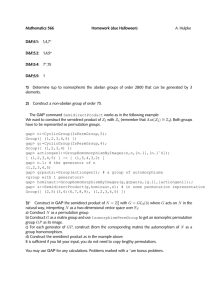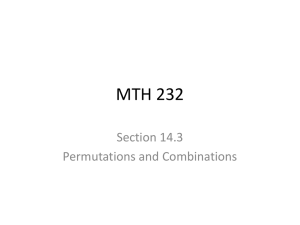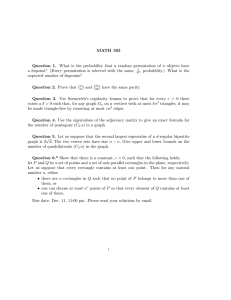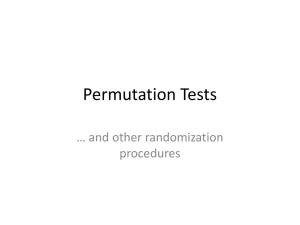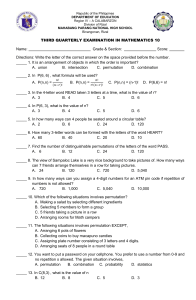− = { ,
advertisement
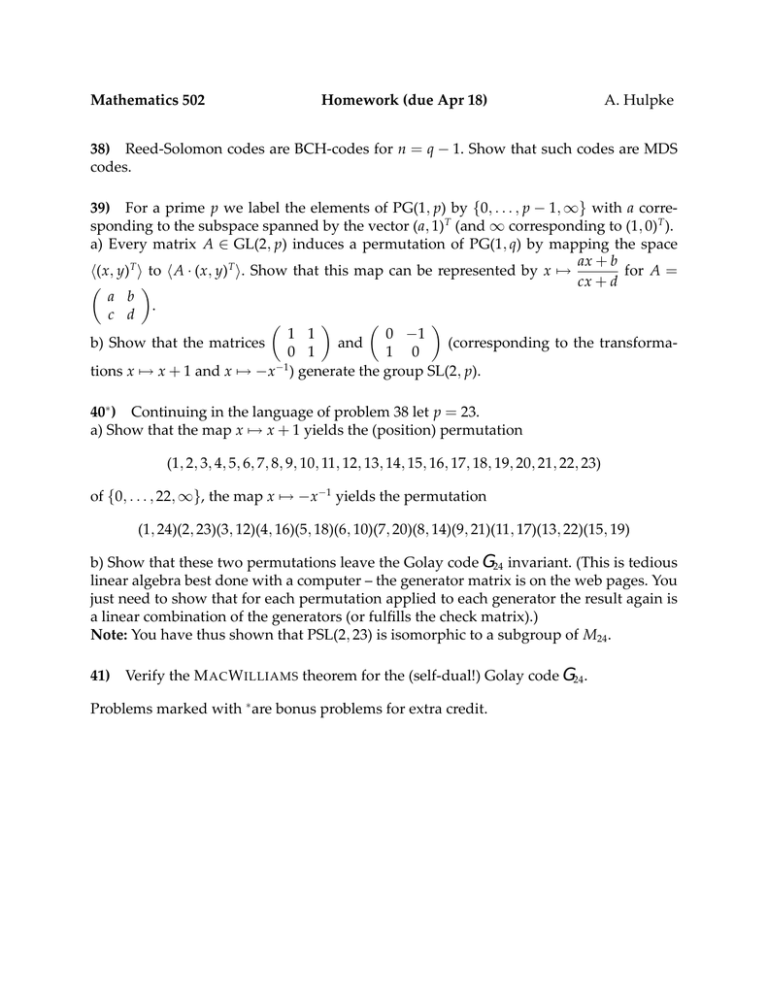
Mathematics 502
Homework (due Apr 18)
A. Hulpke
38) Reed-Solomon codes are BCH-codes for n = q − 1. Show that such codes are MDS
codes.
39) For a prime p we label the elements of PG(1, p) by {0, . . . , p − 1, ∞} with a corresponding to the subspace spanned by the vector (a, 1)T (and ∞ corresponding to (1, 0)T ).
a) Every matrix A ∈ GL(2, p) induces a permutation of PG(1, q) by mapping the space
ax + b
for A =
h(x, y)T i to h A · (x, y)T i. Show that this map can be represented by x 7→
cx + d
a b
.
c d
1 1
0 −1
b) Show that the matrices
and
(corresponding to the transforma0 1
1 0
tions x 7→ x + 1 and x 7→ −x−1 ) generate the group SL(2, p).
40∗ ) Continuing in the language of problem 38 let p = 23.
a) Show that the map x 7→ x + 1 yields the (position) permutation
(1, 2, 3, 4, 5, 6, 7, 8, 9, 10, 11, 12, 13, 14, 15, 16, 17, 18, 19, 20, 21, 22, 23)
of {0, . . . , 22, ∞}, the map x 7→ −x−1 yields the permutation
(1, 24)(2, 23)(3, 12)(4, 16)(5, 18)(6, 10)(7, 20)(8, 14)(9, 21)(11, 17)(13, 22)(15, 19)
b) Show that these two permutations leave the Golay code G24 invariant. (This is tedious
linear algebra best done with a computer – the generator matrix is on the web pages. You
just need to show that for each permutation applied to each generator the result again is
a linear combination of the generators (or fulfills the check matrix).)
Note: You have thus shown that PSL(2, 23) is isomorphic to a subgroup of M24 .
41) Verify the M AC W ILLIAMS theorem for the (self-dual!) Golay code G24 .
Problems marked with ∗ are bonus problems for extra credit.
